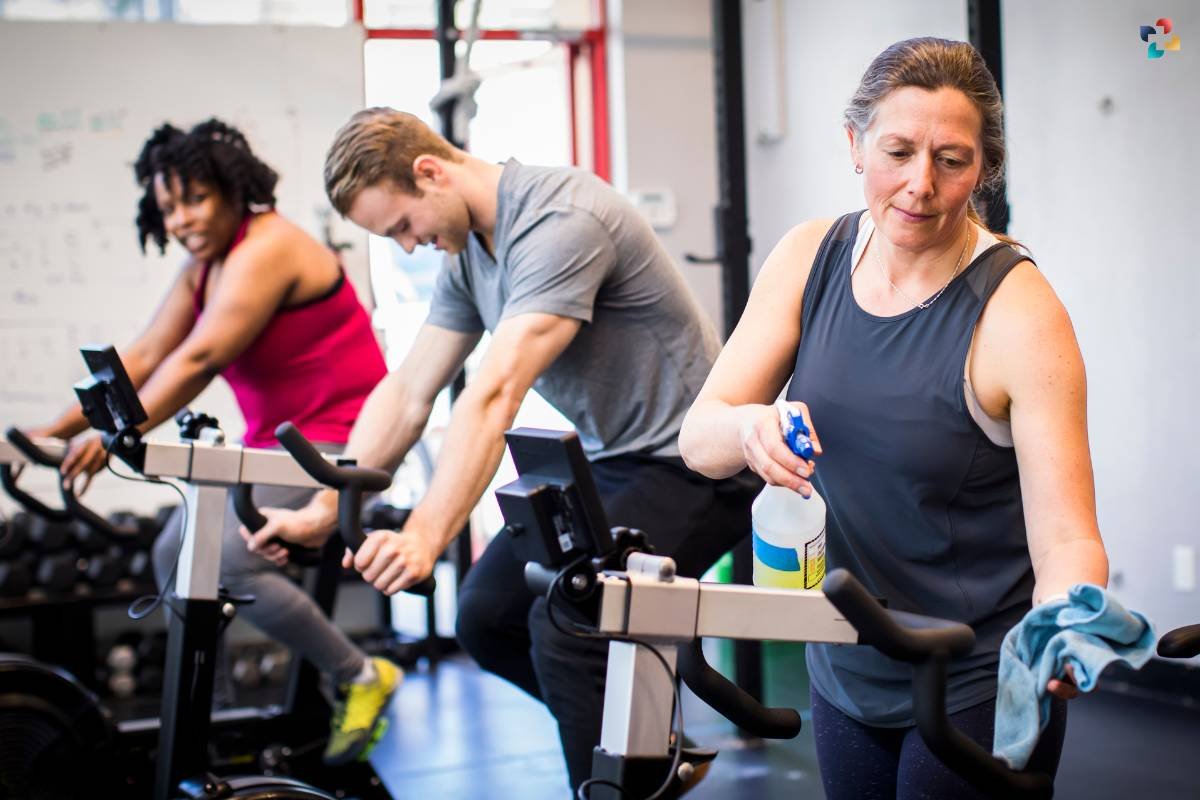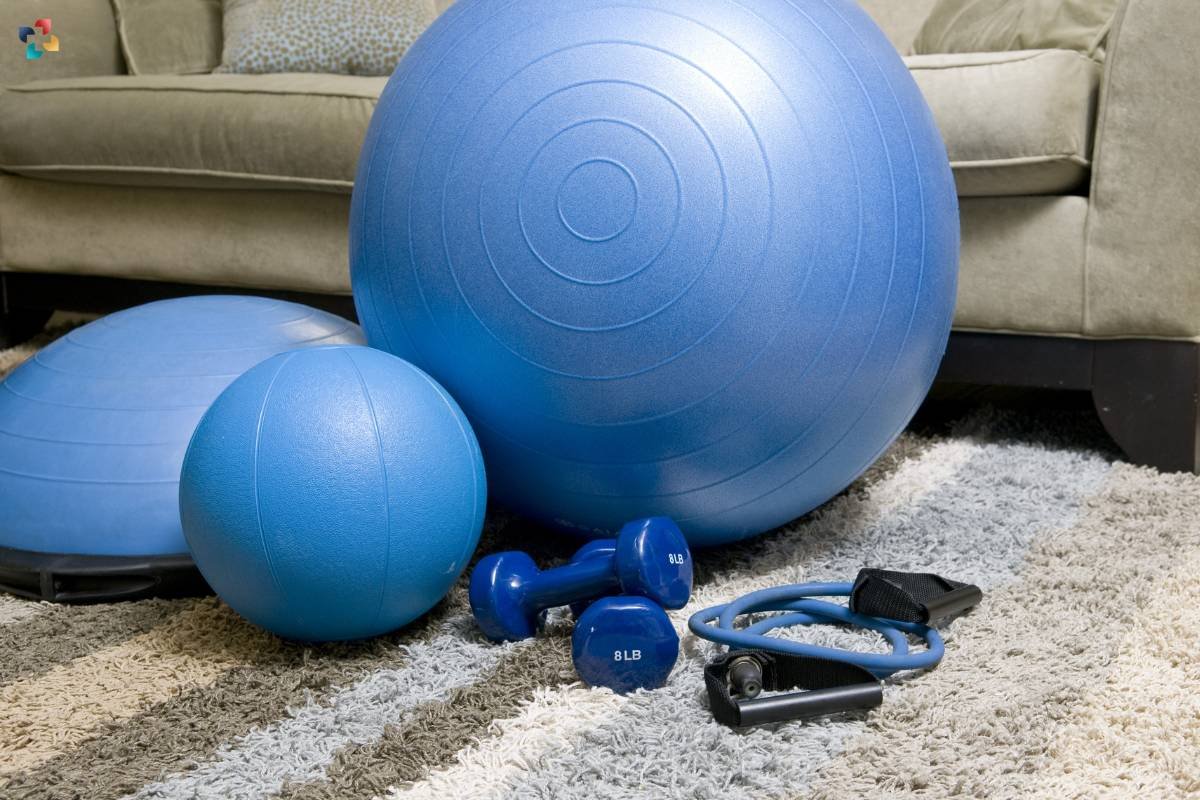A key component of living a healthy lifestyle is getting frequent exercise. But as people’s awareness of cleanliness has grown, so has the necessity of sanitizing workout equipment. Knowing the fundamentals of maintaining clean workout equipment is key, regardless of whether you enjoy working out at the gym or at home. This in-depth article covers 12 crucial topics regarding cleaning your exercise equipment, guaranteeing a clean and safe training environment.
Here Are 12 Essential Tips for Sanitizing Your Workout Equipment:
1. Know Your Workout Equipment Material
Different workout equipment is made from various materials, and each requires specific cleaning approaches. Whether it’s the cushioned surface of a yoga mat or the metal handles of dumbbells, understanding the materials involved helps tailor your sanitization methods effectively.
Example: For porous materials like foam handles on resistance bands, use a mild detergent and water solution to avoid damage.
2. Establish a Regular Cleaning Routine

Consistency is key when it comes to sanitizing workout equipment. Establish a regular cleaning routine that aligns with your frequency of use. Regular cleaning not only maintains a hygienic environment but also prevents the buildup of dirt, sweat, and bacteria on your equipment.
Example: After each workout session, take a few minutes to wipe down your equipment with a disinfectant or sanitizing solution.
3. Use Disinfectant Wipes for Convenience
Disinfectant wipes provide a convenient and efficient way to clean workout equipment. These pre-moistened wipes are formulated to kill bacteria and viruses on contact, making them an excellent option for quick post-workout sanitation.
Example: Keep a pack of disinfectant wipes in your gym bag or near your home workout area for easy access after each session.
4. Homemade Cleaning Solutions Are Effective
You don’t always need commercial cleaning products to sanitize your workout equipment effectively. Homemade solutions, such as a mixture of water and vinegar or water and mild soap, can be just as effective at killing germs.
Example: Create a DIY cleaning solution using one part water and one part vinegar, applying it with a cloth or sponge to wipe down surfaces.
5. Focus on High-Touch Areas
Certain areas of workout equipment are more prone to harboring germs due to frequent contact. Concentrate your cleaning efforts on high-touch areas like handles, grips, buttons, and touchscreens, ensuring these surfaces receive thorough and regular sanitation.
Example: When using a treadmill, pay particular attention to the control panel, as it is a high-touch area that requires frequent cleaning.
6. Don’t Forget About Accessories

In addition to large workout equipment, don’t overlook the smaller accessories that contribute to your fitness routine. Items like resistance bands, yoga blocks, and exercise balls also require regular cleaning.
Example: Wipe down resistance bands with a disinfectant solution and clean yoga blocks and exercise balls with a damp cloth after each use.
7. Consider Machine-Specific Guidelines
If you’re using gym equipment, familiarize yourself with any machine-specific cleaning guidelines provided by the facility. Gyms often provide sanitizing stations with guidelines for cleaning equipment, helping you adhere to their specific standards.
Example: Follow any posted instructions or guidelines provided by your gym regarding the proper cleaning of machines and equipment.
8. Invest in Antibacterial Sprays
Antibacterial sprays specifically designed for workout equipment offer an additional layer of protection against germs. These sprays are formulated to kill bacteria and viruses effectively, providing added peace of mind during your workouts.
Example: Keep a bottle of antibacterial spray in your gym bag for a quick and thorough sanitization of your equipment.
9. Check Equipment Labels for Cleaning Guidance
Many workout equipment items come with care and cleaning instructions provided by the manufacturer. Check these labels or guidelines to ensure you’re using appropriate cleaning methods that won’t damage the materials.
Example: Consult the care instructions on your yoga mat or resistance bands to determine the recommended cleaning solutions and methods.
10. Dry Your Equipment Thoroughly
After cleaning, ensure your workout equipment is thoroughly dried before storing it. Moisture can create an environment conducive to bacterial growth, so proper drying is essential for maintaining a hygienic workout space.
Example: Allow yoga mats and other moisture-absorbing equipment to air dry completely before rolling or storing them.
11. Store Equipment Properly

Proper storage contributes to the longevity and cleanliness of your workout equipment. Store items in designated areas, away from direct sunlight or extreme temperatures, to prevent the growth of mold and bacteria.
Example: Designate a specific area in your home for storing workout equipment, ensuring proper ventilation and minimal exposure to environmental factors.
12. Know When to Replace Equipment
Even with regular cleaning, workout equipment has a lifespan. Pay attention to signs of wear and tear, such as fraying resistance bands or cracked yoga mats. Knowing when to replace equipment is crucial for maintaining a safe and effective fitness routine.
Example: If you notice visible damage or wear on your equipment, consider replacing it to ensure your safety and the effectiveness of your workouts.
Conclusion
Maintaining a sanitary and healthful exercise regimen requires giving your exercise equipment first priority. You can create a safe and comfortable exercise space by focusing on high-touch areas, sticking to a regular cleaning schedule, and utilizing the proper sanitization techniques. Using these pointers in your fitness regimen, whether you work out at the club or at home, guarantees that your transition to a healthy lifestyle is both efficient and hygienic.
Also Read: How to Do Workout Rest Days Right?











